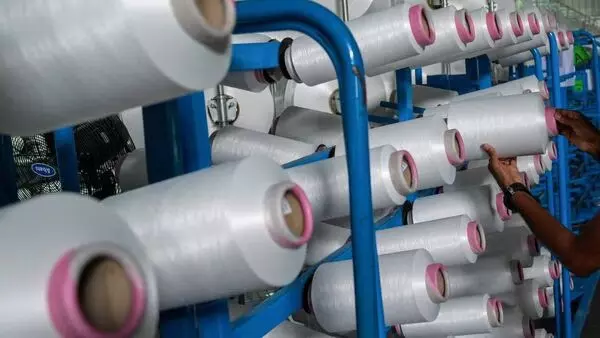Higher fibre prices worry apparel, home textile makers as demand improves

Chennai: Apparels and home textiles are hopeful about robust demand in the international market, especially the US. However, the industry is worried about its competitiveness as cotton and man-made fibre are priced higher than international rates and further correction is unlikely due to the import duty and minimum support price.
The global demand scenario for apparels and home textiles is looking up. In September the exports of readymade garments rose 17.3 per cent to $ 1.1 billion. According to Chandrima Chatterjee, secretary general of Confederation of Indian Textile Industry, the exports in October too are strong as the demand in markets like the US and EU is promising. “Further, we have increased our market share in these countries,” she said.
Similarly, home textiles segment is set to grow by 6-8 per cent this fiscal, riding on resilient demand from the US and expansion in the domestic market, finds Crisil. Home textiles derive 70-75 per cent of its revenue from exports and the US alone accounts for 60 per cent.
However, the industry is worried about cotton and man-made fibre prices. Indian spot cotton prices dropped from 87 to 83 cents per pound over the past month as the new cotton arrivals started. However, ICE December cotton futures are still priced in the range of 67-75 cents per pound, finds Kedia Commodities.
The industry does not expect further correction as the MSP rate of cotton is higher than the market rate and MSP will limit the pressure on prices. “Apart from higher MSP, the add-on of 11 per cent import duty will restrict prices from further softening. This will make our cotton and cotton products less competitive in the international market,” said K Selvaraju, secretary general of Southern India Mills Association. Currently, on shorter staple cotton below the length of 32 mm carries 11 per cent duty and the trade sells cotton to the yarn mills after adding the duty.
Polyester and viscose prices too are making Indian products less competitive. “Indian polyester prices are 25 per cent higher than Chinese and viscose too is 12-15 per cent higher. Moreover, the Quality Control Orders issued by the Bureau of Indian Standards is making import of polyester and viscose difficult for the manufacturers,” he said.
“Despite the growth in apparels, total exports of textiles have been stagnant for the past few years. Exempting the import duty during the off-season and easing QCO requirements can help the exports grow,” said Selvaraju.

